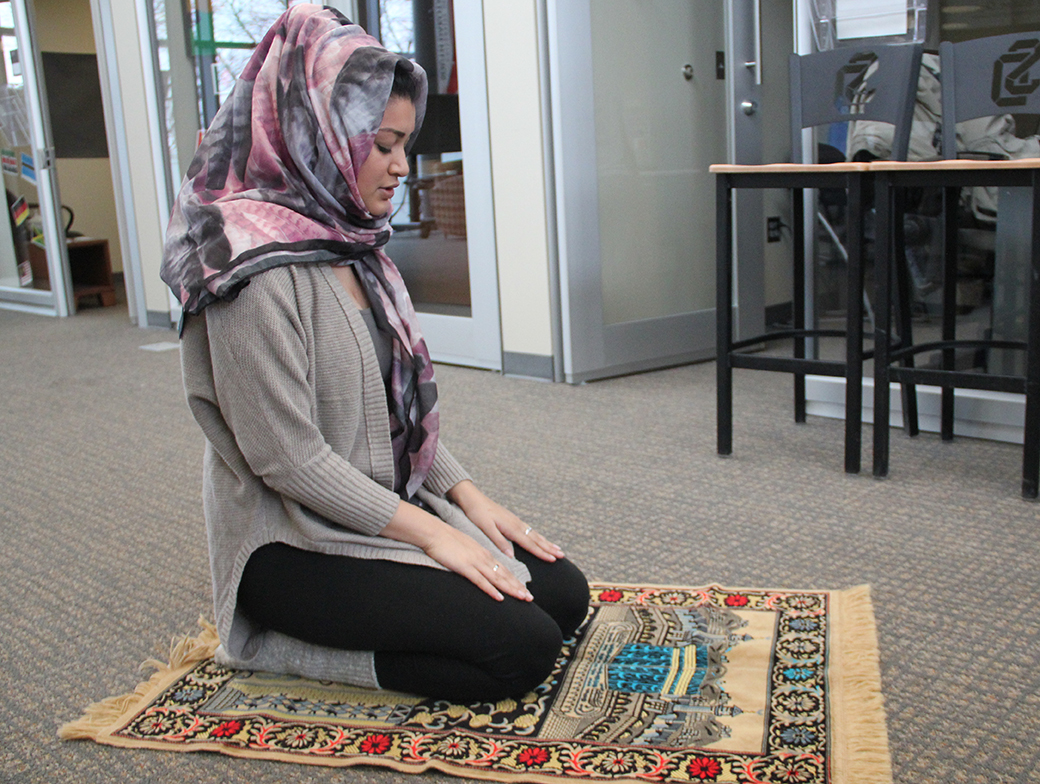
Students practice different customs over break
With a week until the semester ends and winter break officially begins, many University of South Dakota students will celebrate some form of winter holiday throughout the next month or so.
USD students may be aware of Christmas, with 78.4 percent of the United States’ population recognizing the holiday, according to Pew Research. But other religions also celebrate holidays during the break from school.
Senior Krista Crook, a “Campus Crusade for Christ (Cru)” team leader, said Christmas is one of the two important holidays in the Christian religion, the other being Easter.
“Most Christains gather together and they celebrate Christmas, which is what we believe is the birth of Christ,” Crook said.
Most families have ham or turkey and open presents on Christmas day, and the holiday is about family and getting to reconnect with each other, Crook said.
“I like just being with my family and being able to reconnect with them,” Crook said. “I like to see how their lives are going. It’s fun seeing how God’s working in their lives, too.”
Other students, though, celebrate different holidays. Pew Research reports that 1.7 percent of the U.S. population celebrates Hanukkah and 0.6 percent celebrates Islamic holidays.
Leroy Meyer, a philosophy professor, said less recognized holidays are just as intriguing and important as mainstream holidays.
“We should broadly rejoice in the fact that we can rejoice,” Meyer said about celebrating holidays.
Senior Komal Shah, president of the Muslim Student Association, celebrates Eid al-Fitr and Eid-al-Adha, both of which have religious meaning.
Eid-al-Fitr is celebrated on the last day of Ramadan, which is the Islamic holy month in which Muslims reflect on themselves and their relationships with Allah and fast during daylight hours.
“You look forward to spending time with your family,” Shah said.
Eid-al-Fitr is the breaking of that fast, and Shah said it is a day spent surrounded by family. Eid-al-Adha is another day filled with family and food, but on this day Muslims slaughter an animal and give some of the meat to family, friends and the poor.
Unlike Christmas, which has a consistant date, Islamic celebrations tend to rotate. This change, Shah said, is because the Islam faith recognizes a lunar calendar instead of the Gregarian calendar commonly used today.
Shah said all the people reciting prayers at religious services on these holidays is powerful.
“The morning prayer is amazing,” Shah said. “We’re all there for the same god, the same everything, the same set of minds.”
During Eid al-Fitr and Eid-al-Adha, the food and clothing worn by the Islamic parishoners is based on culture.
“(My family) usually wear really colorful clothes,” Shah said. “You’re supposed to wear something clean and new — it’s just so important.”
Still, other students will be celebrating holidays like Kwanzaa or Hanukkah.
Kwanzaa, Meyer said, began in the 1960s as part of the Black Power Movement.
“It’s a wonderful thing,” Meyer said. “The idea, as I understood it, was to afford black people in America something to celebrate their heritage.”
Kwanzaa is observed around the same time as Christmas and Hanukkah from Dec. 26 through Jan. 1, and is a celebration of being African American through recognizing differences in culture.
“(Kwanzaa) promotes the unity of the community,” Meyer said.
Hanukkah is a Jewish holiday much like Kwanzaa. The name Hanukkah translates to the festival of lights and is celebrated from Dec. through Dec. 24.
“Its presence in the modern culture has more to do with the idea of Kwanaza for the Jewish children,” Meyer said. “(The object is) to have something that would promote Jewish culture.”
All cultures and religions build on each other in a process called syncretism or a sort of unity, he said.
“A broad celebration, and to associate that with the winter solstice, is a positive thing,” Meyer said. “Without being immersed in a culture we are limited in our understanding.”
(Photo: Senior Komal Shah said praying during Eid-al-Fitr and Eid-al-Adha is an important aspect of the celebration. Muslims use a prayer rug to pray five times a day in the direction of Mecca, a city holy to Islam located in Saudi Arabia. Malachi Petersen / The Volante)

